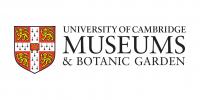
Submitted by Tricia Harnett on Tue, 27/11/2018 - 11:11
A new temporary display at the University Museum of Zoology highlights historical depictions of both exotic and more familiar animals.
The ten books are on loan from the Department of Zoology’s Balfour and Newton Libraries here at the University of Cambridge, and each is open at a stunning illustration of one of the animals they describe.
Among the collection are some of the most important texts in the history of natural history. For example, Georges Louis Buffon (1707–1788) was one of the most prominent scientists of eighteenth century France, and his multi-volume Histoire naturelle [‘Natural history’], published throughout the mid-1700s, attempted to bring together all the knowledge on the natural sciences at the time.
Buffon put animals into groups which shared particular characteristics, and described loose relationships between these groups. In Buffon’s classification, some species bridged the gap between classes (for example bats bridge the gap between four-legged animals and birds; apes bridge the gap between four-legged animals and humans). His system incorrectly had humans at nature’s central pinnacle, and he structured the Histoire naturelle in order to reflect humanity’s relationship with animals, dealing first of all with domestic animals.
The oldest image on display features a bizarre depiction of three animals named ‘loup’, the French word for wolf. It was produced in 1742 by Marguerite Chéreau (working under the name ‘Widow Chéreau’).
The central animal is a ‘normal’ grey wolf, depicted attacking people and howling. The bottom animal, named ‘dog-wolf’ appears to be a wolverine (the largest member of the badger’s family), although it is unclear why it is drawn pooing.
The top animal is the most confusing. It is labelled as ‘Loup blanc Seruie’, which translates as ‘white Serbian wolf’, but it is stripy. It is possible this is a striped hyena: the closest current population to Serbia is over 1500km away in Turkey. Alternatively, it may be a lynx, if the label is a misspelling of its old French name ‘loup-cervier’.
This book is a bound volume of the plates from several publications, many of which have been pasted in like a kind of scrap book. It also includes sets of engravings made by two Parisian women who took over their families’ publishing businesses after their husbands’ deaths: Marie Briot and Marguerite Chéreau.
As well as whole animals, fossils and skeletons are also included in the new display. A drawing of the skeleton of a snake-eating African secretary bird comes from a book by Thomas Eyton (1809 – 1880). Eyton helped Charles Darwin prepare the descriptions of the birds collected on the Beagle voyage. Although he was firmly opposed to his theories, his friendship with Darwin continued to his death. Several specimens from Eyton’s own personal museum are now part of our collections.
The largest illustration is of a fossil relative of the modern mackerel, from Louis Agassiz’s Recherches sur les poissons fossils [‘Research on fossil fishes’]. Agassiz (1807 – 1873) was a Swiss-born American zoologist, palaeontologist and geologist. Recherches one of the first comprehensive publications on the topic, published in five volumes.
Agassiz introduced a new classification for fish and also published abundantly. He described a huge number of species (although not all of them are still considered valid).
After moving to America, he founded the Museum of Comparative Zoology at Harvard, of which he was the curator from 1859. He was also involved in creating the National Academy of Sciences in 1863. However his legacy is significantly tarnished by the scientific racism that underlay his mistaken belief that different human races had different origins.
The books will be on display on the Museum’s Mezzanine until May 2019. Please be aware that the Mezzanine does not have step-free access.
Image captions:
Above: The Bengal slow loris, a small Asian primate related to lemurs, from Buffon’s Histoire naturelle (1789)
Below: The three unusual ‘wolves’ from Chéreau’s 1742 publication.






